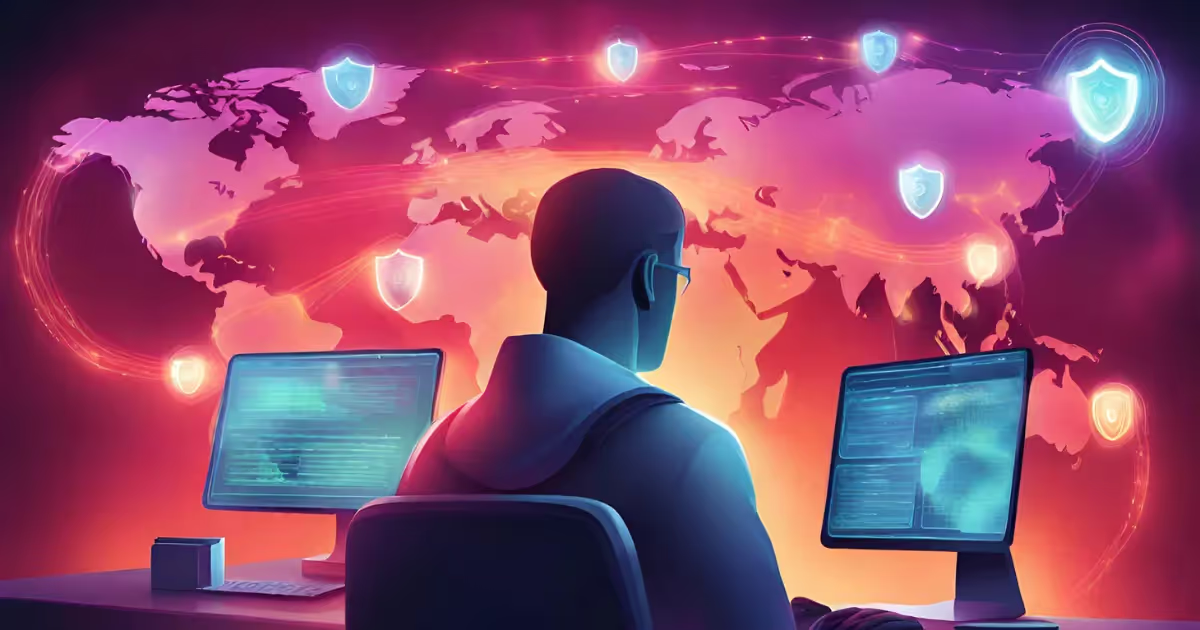
Managed Detection and Response (MDR) is an outsourced service that provides organisations with a higher level of cybersecurity by actively hunting down threats and neutralising them.
Security providers who offer Managed Detection and Response will deploy a range of sophisticated monitoring technology along with the human element in security researchers and engineers who will monitor the network, analyse incidents and respond to any incoming threats.
Benefits of Using MDR
Any business using an MDR solution can gain a number of benefits from the system, including
Overall improvement of security posture—organisations can become more resistant to cyber attacks with optimised security and the elimination of any rogue systems
High-level threats extinguished—through live monitoring of all networks and infrastructure, it is easier to correctly identify and prevent the most sophisticated cyber attacks
Increased detection speed—what may have taken several months to realise what was happening can now be recognised as a threat within minutes and quickly acted upon
Lateral movement detection—whereas, typically, MSSPs or managed security service providers would form a kind of perimeter defence and normally only detect threats as they crossed the threshold and gained entry into the business, with MDR solutions it is possible to effectively analyse issues or anomalies that occur within the network infrastructure, allowing security teams to deal with threats from within as well as those coming from an outside or external source
Frees up staff and working hours—with IT personnel no longer chasing around carrying out repetitive incident response work, their roles can be freed up towards more proactive duties that help the business to grow, responding to threats and trying to pinpoint compromised systems can take up many valuable working hours and resources that could be better spent elsewhere
Challenges to Adoption of Endpoint Detection and Response Tools
Technology Without the Training
It can be tempting for organisations to adopt endpoint detection and response tools using their existing IT personnel to manage the process. This however places an extra burden on security teams who often have an array of technological solutions on hand but do not have either the time or training to utilise these effectively.
Investment in high-end detection software can end up having the opposite effect to what was intended and end up costing more time and resources whilst confusing and frustrating staff in the process.
Constant Notifications
Without a fully managed solution with dedicated analysts monitoring the data, it can quickly become frustrating for an IT department to adopt detection and response software in itself.
There can be a lot of false positives and multiple alerts pinging on your IT staff’s computers with nobody really understanding which is the most critical threat to deal with and which can safely be ignored.
It helps to have a team of experts sift through the data, somebody who understands the software and has experience in its practical application. This is why it is always recommended to adopt a fully managed detection and response solution with real-life security engineers monitoring the data.
This means that the human analysts can process the alerts and notifications given to them by the software and make their own assessment as to which is most critical and needs to be acted upon swiftly and which alerts are lower priority or erroneous readings.
Is a Managed Solution the Answer?
Rather than simply downloading some complex endpoint detection and response tool and expecting their IT staff to make full use of it, organisations that leverage a managed detection and response solution would tend to get the maximum benefit from the technology.
All relevant data on emerging threats, advanced analytics and intelligence updates are sent to human analysts who can triage these alerts and notifications, finding the most appropriate response and making full use of the data that is provided to them.
Machine learning and AI-based software are certainly at an advanced level in the current marketplace and give a significant amount of support to cybersecurity personnel. However, hackers and other malicious actors are often very crafty individuals and know how to circumvent checks and scrutiny from many computer-based monitoring tools.
It takes a real-life team of human experts sometimes to not only interpret the data but to counteract the moves of a hacker and spot their attempts at evasion and subterfuge, reacting quickly to contain any data breaches or unauthorised access.
Cybersecurity is something like a chess match and one thing you don’t want is to find yourself in a chess match with a computer system that only knows how to play snakes and ladders.
Lyon Tech Managed Detection and Response Solutions
At Lyon Tech we deploy a range of cutting-edge monitoring and analysis technology combined with real-life teams of human experts in security engineering and cyber intelligence.
This means we can provide businesses with a robust security system that actively hunts down any suspicious activity or emerging threats, with trained personnel on hand to take the appropriate action and rapidly respond to any issues and contain the threat.
Key stages of Lyon MDR Solutions include
- Detection
- Prioritisation
- Threat Hunting
- Investigation
- Guided Response
- Remediation
Along with live monitoring and threat detection, we provide 24/7 help teams and ongoing support, including staff training and vulnerability management. This provides businesses with an all-encompassing end-to-end solution that ensures a robust defence against cyber attacks, meaning they can carry out their daily operations with more time, resources and staff available.
Contact Lyon
If you would like to know more about managed detection and response solutions and how they could improve the security of your business, contact our expert analysts today.
We can provide an audit of your existing setup and advise on which detection and response systems would be most appropriate for your industry and the intended goals of your business.


